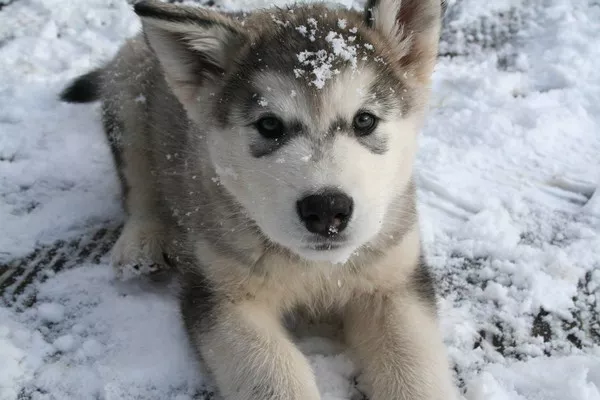The Alaskan Malamute and the Siberian Husky are two popular dog breeds that are often confused for each other. Both breeds are large, have thick double coats, and are known for their friendly and playful personalities. However, there are some key differences between the two breeds that set them apart.
History
The Alaskan Malamute is a much older breed than the Siberian Husky. The Malamute originated in Alaska, where it was used by the Inuit people for centuries as a working dog. Malamutes were bred for their strength and endurance, and they were often used to pull sleds and haul heavy loads.
The Siberian Husky, on the other hand, is a much newer breed. It originated in Siberia, where it was used by the Chukchi people for herding reindeer and pulling sleds. Huskies are smaller and lighter than Malamutes, and they are known for their speed and agility.
Physical Appearance
Despite their similarities, there are some key physical differences between Alaskan Malamutes and Siberian Huskies. Malamutes are larger and more muscular than Huskies. They have a broader head, a shorter snout, and a thicker neck. Malamutes also have a longer tail that they often curl over their backs.
Huskies, on the other hand, are smaller and more slender than Malamutes. They have a narrower head, a longer snout, and a thinner neck. Huskies also have a shorter tail that they often carry low.
Coat
Both Alaskan Malamutes and Siberian Huskies have thick double coats that help them to survive in cold climates. However, the two breeds have different coat types. Malamutes have a coarse outer coat with a soft undercoat. Huskies have a softer outer coat with a thicker undercoat.
Temperament
Both Alaskan Malamutes and Siberian Huskies are friendly and playful dogs. However, the two breeds have different temperaments. Malamutes are more independent and stubborn than Huskies. They can be challenging to train, but they are loyal and devoted companions.
Huskies are more outgoing and social than Malamutes. They are easier to train than Malamutes, but they can be mischievous and destructive.
Care
Both Alaskan Malamutes and Siberian Huskies require a lot of exercise. They are best suited for homes with large yards or access to plenty of open space. Both breeds also require regular grooming to keep their coats clean and free of mats.
Training
Both Alaskan Malamutes and Siberian Huskies can be trained, but they require different approaches. Malamutes are best trained with positive reinforcement methods. Huskies are more responsive to a firm hand and consistent training.
Health
Both Alaskan Malamutes and Siberian Huskies are prone to certain health problems. Malamutes are more likely to suffer from hip dysplasia, elbow dysplasia, and bloat. Huskies are more likely to suffer from eye problems, such as cataracts and glaucoma.
Lifespan
Both Alaskan Malamutes and Siberian Huskies have a lifespan of 10-13 years.
Conclusion
While Alaskan Malamutes and Siberian Huskies are both popular dog breeds, they are two distinct breeds with their own unique characteristics. If you are considering getting a dog of either breed, it is important to do your research to make sure that you are choosing the right dog for your lifestyle and needs.
Additional Information
Here are some additional information about Alaskan Malamutes and Siberian Huskies:
Alaskan Malamutes are typically more expensive than Siberian Huskies.
Alaskan Malamutes are not as popular as Siberian Huskies.
Alaskan Malamutes are more likely to be used as working dogs than Siberian Huskies.
Siberian Huskies are more likely to be used as sled dogs than Alaskan Malamutes.
Ultimately, the best way to decide which breed is right for you is to meet both Alaskan Malamutes and Siberian Huskies in person. Spend some time with each breed to see which one you connect with best.


